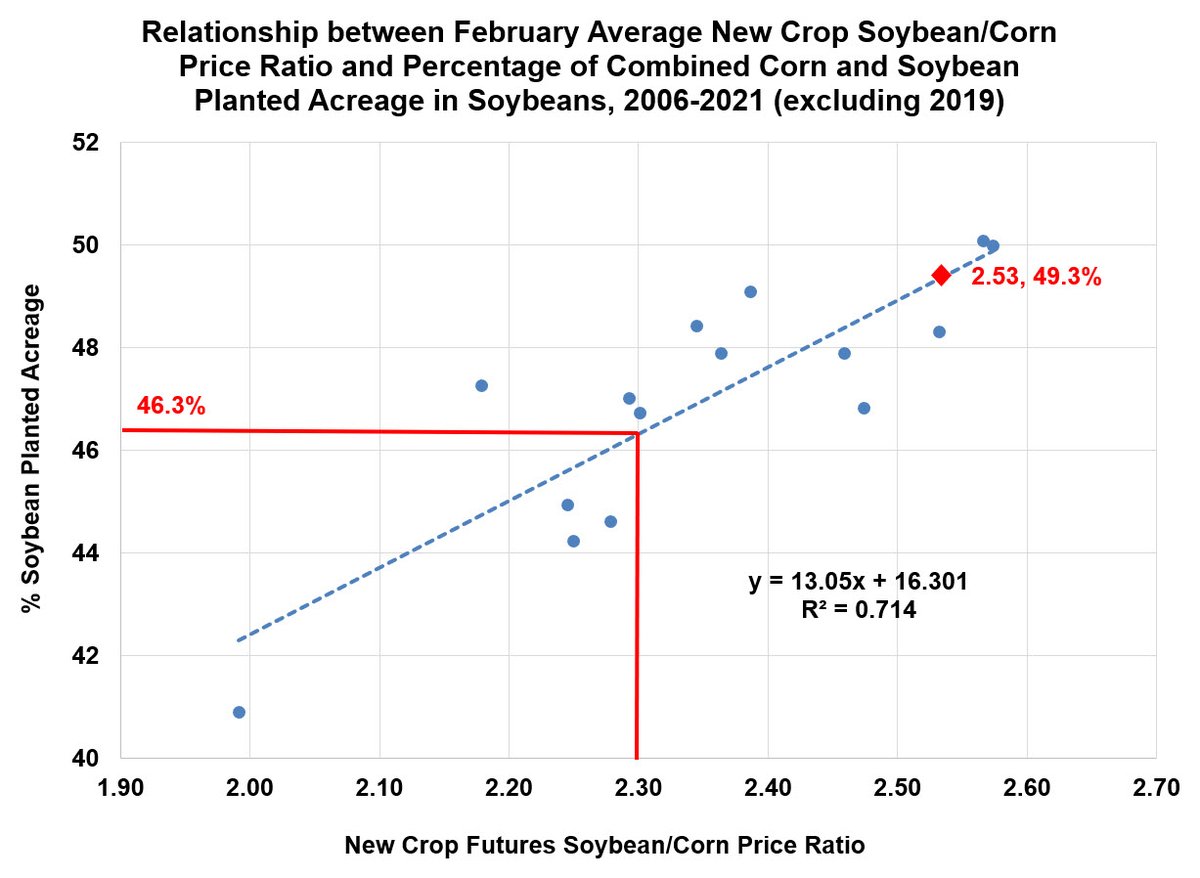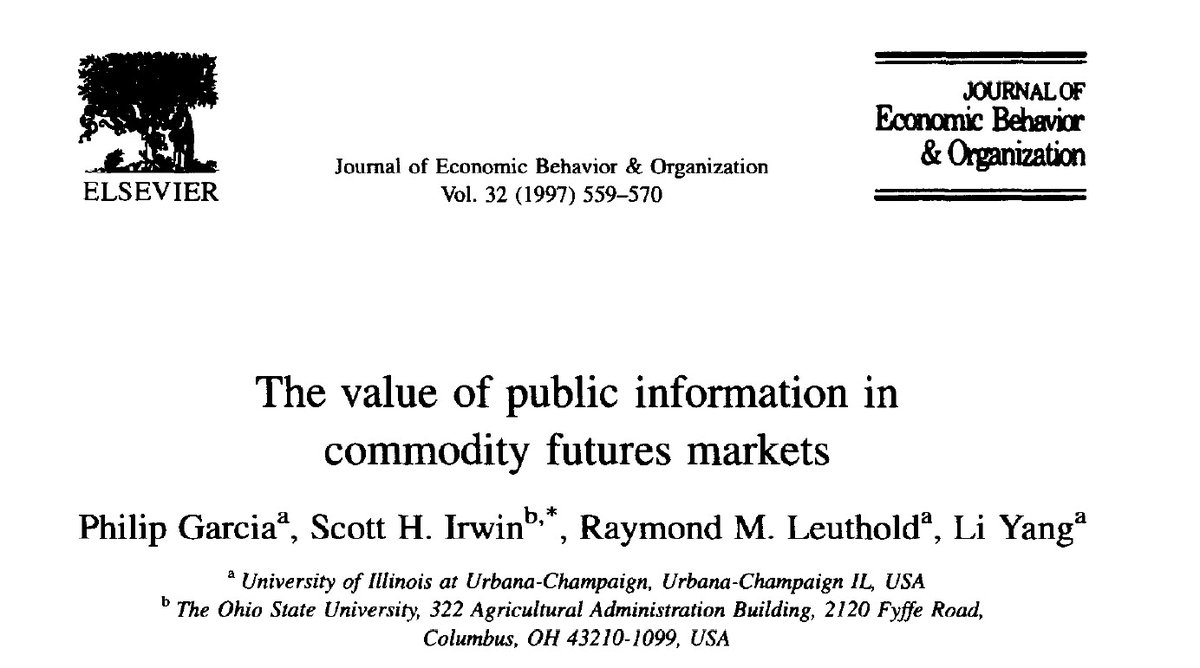
1. Could not resist one more data exercise on corn and soybean planted acreage for 2022. Gonna reverse engineer things here. Asking how likely is 91 million planted acres for corn given current market incentives? 

2. What I do is drop total planted corn/soy acreage back to 181.5 million and then assume corn planted acreage will be 91 million. Certainly some in the market thinking this way. Gives 91 mil for corn and 89 mil for soybeans. Implies a split of 49.3% for soybeans. 

3. Now I simply plot current 22 new crop soybean/corn price ratio of about 2.25 vs. 49.3% planted acreage for soybeans. We would be looking at uncharted territory at least in recent history if that were to happen. Certainly not impossible but unlikely. 

4. Still another way of making the same point. It would take a soybean/corn price ratio of 2.53 for the model to predict a 49.3% soybean acreage split next year. Right now Nov 22 beans trading at $12.31. A ratio of 2.53 implies a Dec 22 corn price of $4.87. 

5. Dec 22 trading right now at $5.52, or 70 cents higher than needed to imply a ratio of 2.53. Also note that right now new crop soybean/corn price ratio for 22 is 2.23. 

6. So, can we get 91 million planted acres of corn? Possible but unlikely given current market incentives. However, we still have some time before February, which is the time period for the price ratio in this chart. This shows how much change is needed. 

• • •
Missing some Tweet in this thread? You can try to
force a refresh









